Open D Guitar Chords – Major Chords
In today’s lesson, we will work on our Open D major chords. In particular, the primary chords from the key of D major: are D, G and A.
Open D (DADF#AD) is an altered tuning that is exceedingly popular with creative guitarists exploring new sounds and chord voicings. You can take the guitar chords you normally play, retune to open D and get some new sounds to spice up your repertoire.
I refer to an altered tuning as anything that is not standard guitar tuning (EADGBE). Many altered tunings exist, but I found Open D, Open G, and DADGAD are the most popular. Drop D tuning is also very popular, requiring only the 6th string to be tuned down from D to E.
The acoustic is likely the most commonly used guitar, though many electric guitarists also use this tuning. Open D, sometimes referred to as Vestapol tuning, is frequently heard in blues, rock, Celtic, popular, folk and classical guitar. Resonator (Dobro) and lap steel guitars also use this tuning regularly.
How to Tune to Open D Guitar Tuning
You will want to learn to tune by ear but at the start, use a guitar tuner until you’ve memorized the sound of the open D chord. To tune to Open D by ear from standard guitar tuning, follow these instructions:
- Play the open 4th string (D), and lower the 6th string down a whole step. Match the 4th string, so it sounds an octave lower than the 4th
- Now play the 4th string again and lower the 1st string down a whole step from E to D.
- You should have three D’s, one on the 6th, 4th and 1st. Try to get all three D’s in tune together.
- Finally, tune the 3rd string down a half step from G to F#. This is approximately a quarter turn on the tuning peg.
- I then play all the open strings and listen to any imperfections in the sound of the D chord.

Primary Chords in the Key of D
The primary chords in D major are D, G and A. These chords fall on the st (D), 4th (G), and 5th (A) degrees of the D major scale. Chords are often symbolized using roman numerals, so sometimes you will see the primary chords written like this: D (I), G(IV) and A(V). These three chords are the building blocks of most songs in a major key, especially blues music. Check out this lesson here if you want to learn how to play a 12-bar blues in Open D.

Now that you know the primary chords in D major let’s learn four ways to play each chord. First, we will learn four D major chords up to the 12th fret.
Want to learn some blues riffs and solos in Open D? Check out my book “101 Blues Riffs in Open D”
D Major Chords in Open D Tuning
I will stick to four-string chords in this lesson, but you can add or subtract as many notes as you like from the other strings. As long as there is a D, F# and A in the chord, you are good to go.
The easiest place to start is to strum the open strings from the 4th to the 1st string, then move up the neck to find the most convenient fingering. Watch the video to learn all 12 ways of playing a D major chord below:

Want to learn 36 minor chords in Open D guitar tuning? Check out the Open D Minor Chords Lesson.
Chord Inversions – Theory
The best way to think of chord inversions is to see the notes of the chord as a geometrical shape. The root note is a square, the 3rd is a triangle, and the 5th of the chord is a circle. The notes of the chord (or shapes) can be rearranged in three ways:
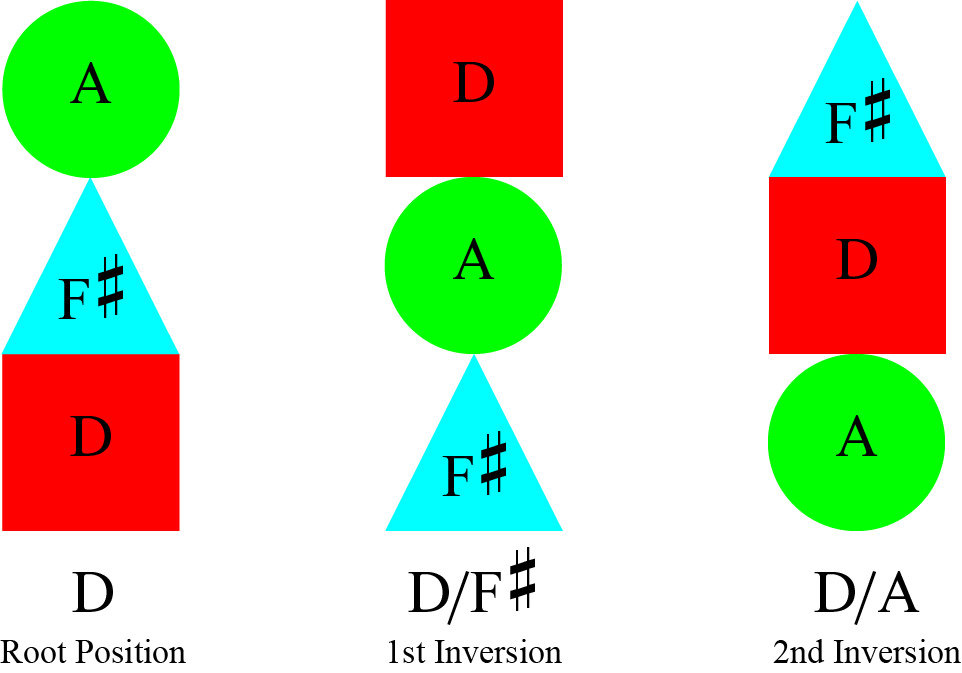
And as long as we play the 3 notes together, we are playing the D major chord. If D is the lowest-sounding note, we play a D major in root position. When the F# is the lowest note, we play a D major in first inversion, often written with a slash: D/F#. If the A is the lowest note, then we are playing a D major chord in 2nd inversion. This chord is written like this: D/A.
All three are D chords but have different harmonic functions and sound. Generally, the root position is preferred, while the 1st and 2nd inversions are used as transitional chords (D/F#) or substitute dominant chords (D/A).
It’s a good idea to memorize all the major chord shapes in the video as they can be transposed to different keys, greatly expanding your chord repertoire.
Let’s move on to the fourth chord of D (IV): G major.
G Major Chords in Open D Tuning
You will start recognizing the major chord shapes reoccurring as you learn the G chords in open D tuning. All these chords are moveable, meaning you just take the chord and shift it down the neck to play different chords. This is what the notes of the G major chord look like in Open D tuning:
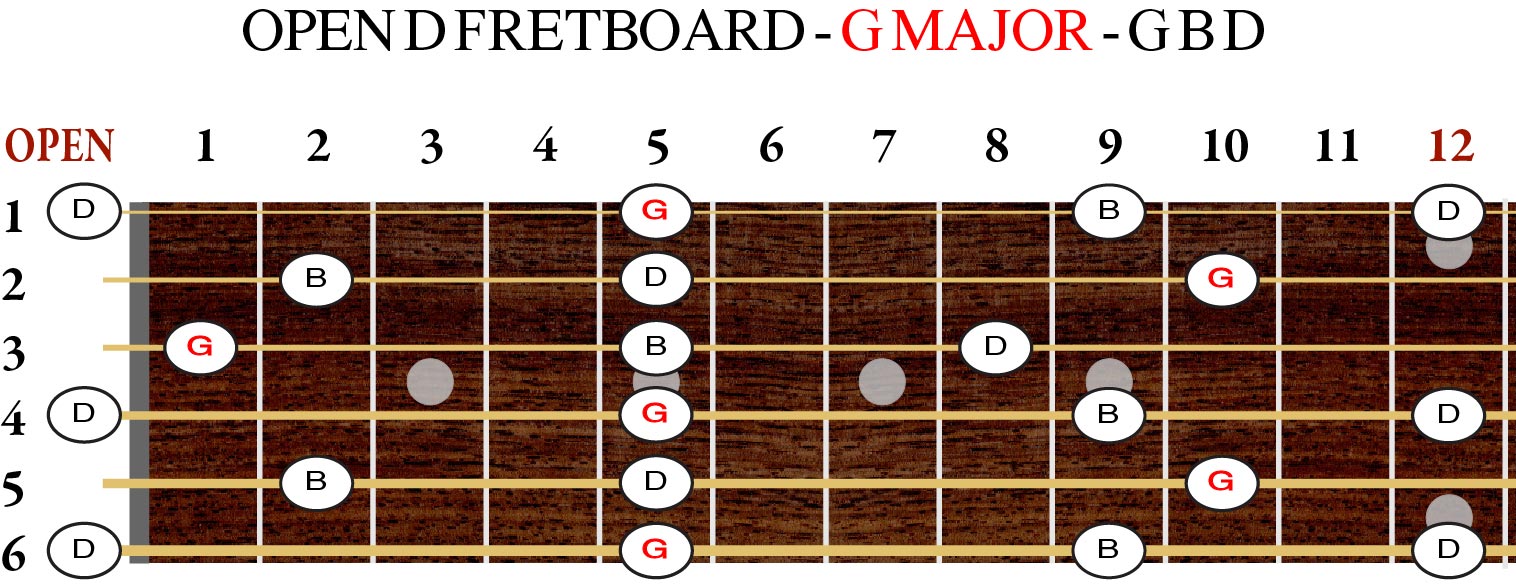
Now watch the video to learn 12 G major chords:
Finally, we can learn the A major chords in Open D tuning.
The A Major Chord in Open D
Hopefully, by now, you know the shapes you learned on the D and G chords. Our last chord is the A major chord (A, C#, E). Here are the notes of the A major chord on the fretboard.
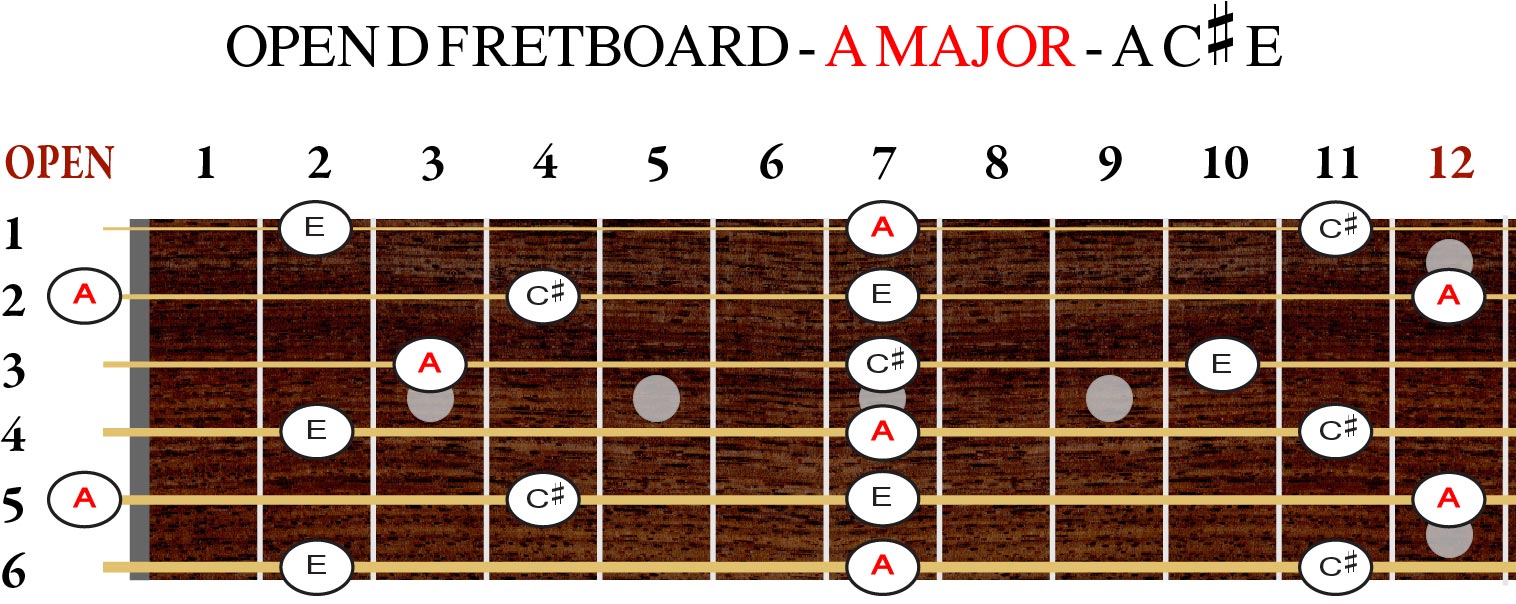
Now watch the video to learn 12 A major chords:
So, now you can try to memorize the reoccurring chord shapes and apply them to your songs. How about we put our chords to use and learn a few chord progressions in D major?
Popular Songs with Open D Primary Chords
The chord progressions below are taken from popular songs you have likely heard before. Playing in Open D gives a new sound to songs originally played in standard guitar tuning. They will sound different because they have different voicings (arrangement of notes), but that could be good.
Maybe this will inspire you to convert some of your standard tuning guitar songs into your repertoire with Open D. Not everything is in D major, so you must transpose the chords to the key of your choice. Take the moveable shapes and transpose them to the appropriate key.
Want to learn a 12 bar blues in Open D? Check out this lesson here.
Want to learn 5 popular songs with major and minor chords in Open D? Go here: Open D Minor Chords Lesson.
Transposing Open D Chords
That’s it for the primary chords in D major. The next step is transposing these chord shapes to the other major keys. The chord shapes from this lesson are likely the most played major chords in Open D tuning, but there’s no reason not to learn all the keys to master Open D guitar tuning fully.
Play the major chords using the circle of fifths. Experiment with different string sets but try to keep your hand within a five to six-fret span:
F C G D A E B F# C# G# Eb Bb
Of course, the major chords are essential to learning, but minor chords are no less important. That will have to wait until our next Open D chord lesson: learning the secondary chords in D major.
Check back again for the next lesson. Subscribe for new lessons, books and sheet music arrangements to continue your Open D journey.
101 Blues Riffs and Solos in Open D Guitar Tuning
Take your Open D guitar playing to the next level with “101 Blues Riffs & Solos in Open D Guitar Tuning.” The most complete instructional book ever written exclusively in DADF#AD tuning. Using a combination of slide, fingerstyle and pick playing, you will cover all the bases needed to develop a solid technique in open D guitar. Everything you need to master the blues with essential lessons in DADF#AD guitar tuning!
• Master the Blues in Open D Guitar Tuning
• Slide, Fingerstyle and Picking Riff and Solos
• Traditional, Delta, Rock, Funk and Jazz Blues
• Extensive Scale, Chord, and Arpeggio Charts
• A Complete Course for Open D (DADF#AD)
• Audio Tracks Below
OPEN D (DADF#AD) Guitar Chord and Fingerboard Posters
This two-poster guitar chord set is an excellent reference for creative guitarists exploring the world of altered tunings in Open D tuning (DADF#AD).
Celtic Flatpicking Open D Guitar Tuning
Celtic Guitar Flatpicking in Open D Guitar. Tuning your guitar to DADF#AD or “Open D” tuning compliments Celtic guitar music perfectly. 30+ Celtic session tunes and songs. Jigs, reels, songs, hornpipes, waltzes, plus useful tips for Flatpicking and ornamentation. DADF#AD chords and arpeggios, Celtic strumming patterns, Campanella major, minor and modal scales, plus a DADF#AD fingerboard chart.
The Open D Guitar Christmas Songbook
The Open D (DADF#AD) Guitar Christmas Songbook has thirty-holiday favourites and a 40-page Open D reference with Tab, chords, and more.


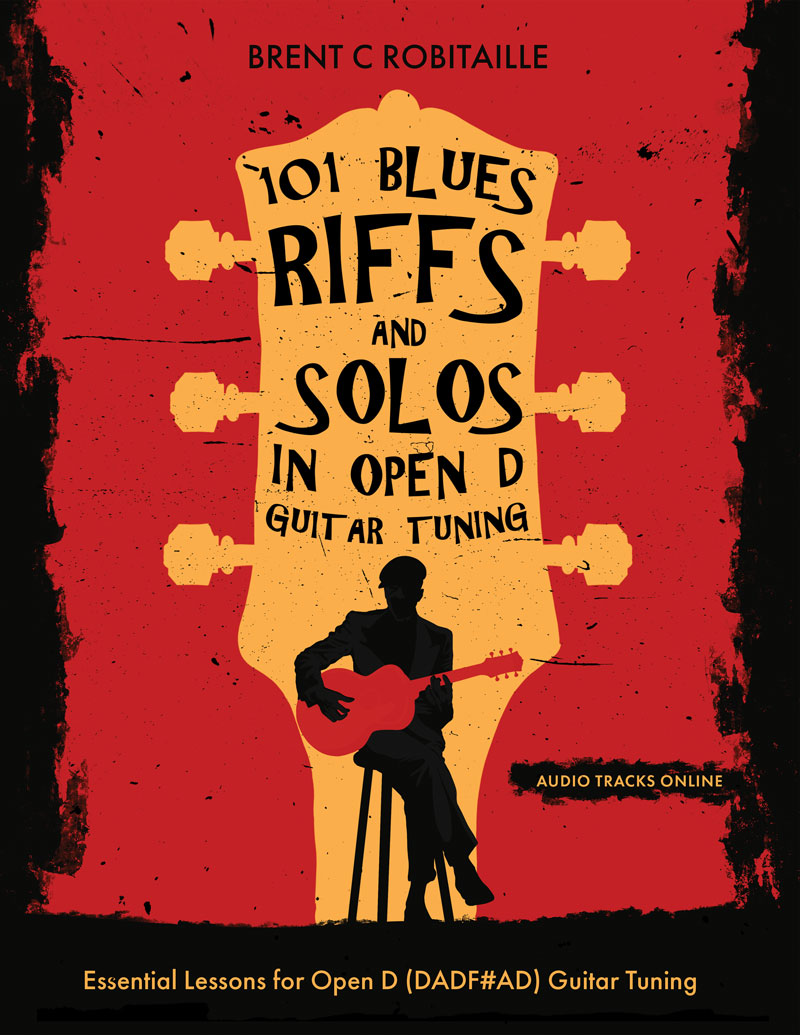
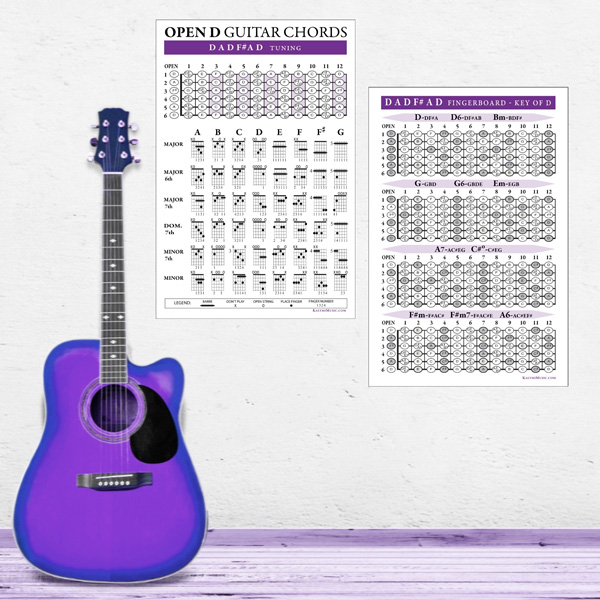
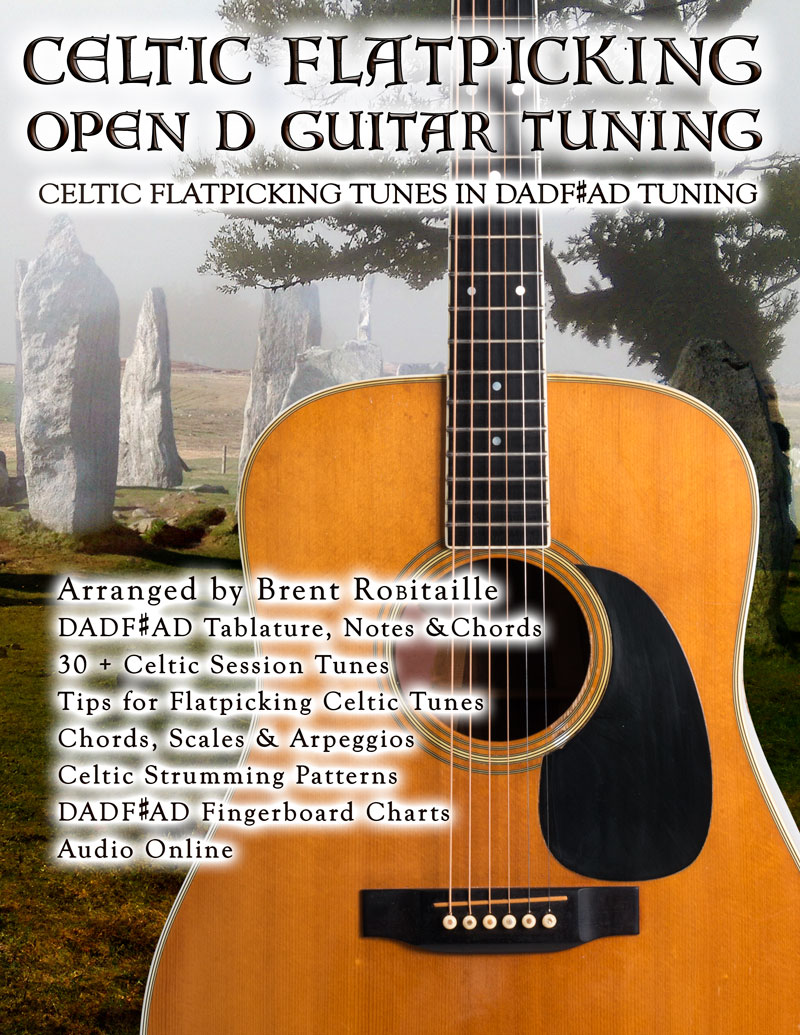


Looking for some good RHD picking patterns
Do you mean right-hand patterns in open D?